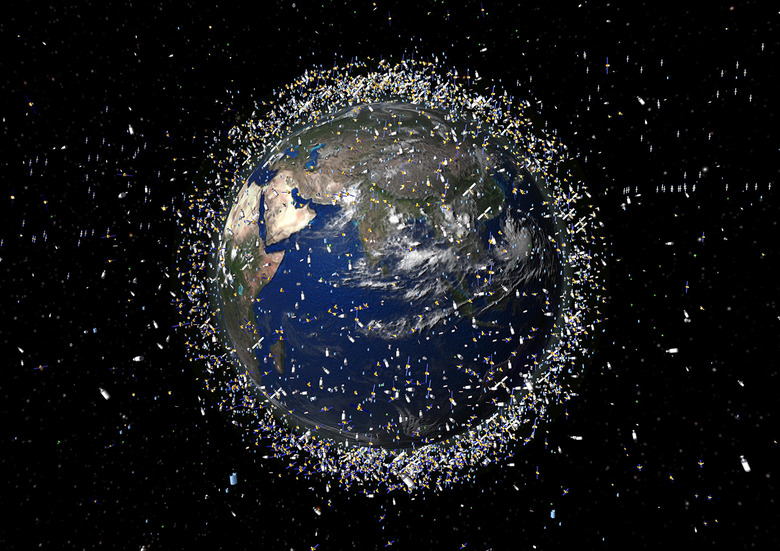Two Satellites Are About To Make An Incredibly Close Pass In Earth Orbit
It's easy to imagine the area around Earth being so incredibly large that there's no way we could ever clog it with manmade debris. Unfortunately, nothing could be further from the truth. Humans have launched a whole lot of hardware into orbit around Earth, and every once in a while, two of those objects end up on a collision course.
As Space.com reports, two satellites are on a near-collision course today, and while the odds of a crash are slim, a collision would create a whole bunch of additional space junk that could pose a major problem for future missions.
Based on current observations of the satellites, it looks like they'll manage to miss each other at a distance of as little as 13 meters. However, there's still a very small chance that the data is slightly off and that the two machines will indeed crash.
Our latest data on the IRAS / GGSE 4 event shows potential miss distances of 13-87 meters, with a lowered collision probability currently at 1 in 1000. Time of closest approach remains at 2020-01-29 23:39:35.707 UTC
— LeoLabs (@LeoLabs_Space) January 28, 2020
The satellites themselves have long since been decommissioned. The Infrared Astronomical Satellite and the Gravity Gradient Stabilization Experiment are essentially dead, but they've remained in Earth orbit long after they stopped being useful.
That's one of the biggest issues with the current "space junk" problem. Space agencies launch hardware into orbit without much regard for where it might end up after those machines complete their missions. Satellites eventually deorbit, slamming into Earth's atmosphere and being totally destroyed in the process, but for some satellites, it can take years or even decades for that to happen.
If the two satellites collide, the damage they do to each other would likely create many more pieces of debris. That material would be sent flying at unpredictable angles, and future rocket launches and satellite missions would need to account for that debris in order to keep their own hardware safe.
